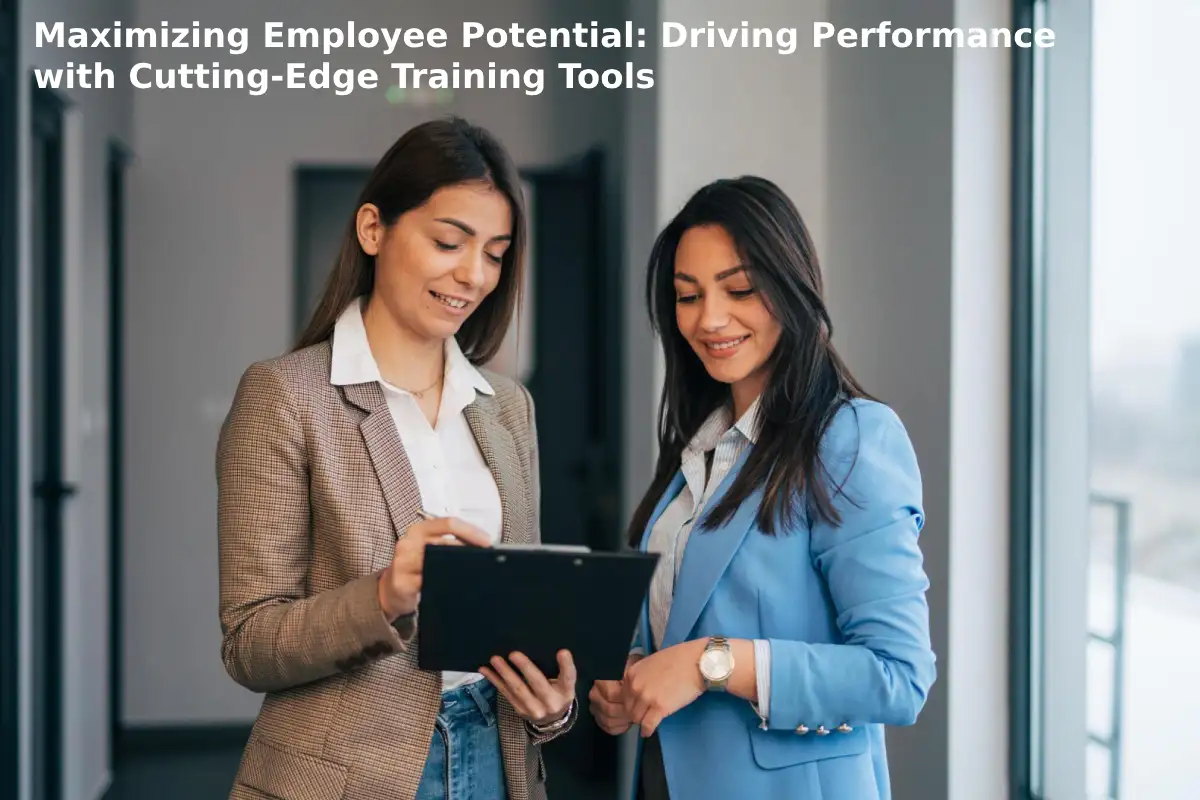Maximizing Employee Potential: Driving Performance with Cutting-Edge Training Tools

In today’s rapidly changing business environment, the ongoing enhancement of employee skills is critical for success. The capacity to acquire new skills and adjust to evolving technologies, practices, and industry standards distinguishes top performers and leading organizations. This blog post examines the impact of advanced training technologies on employee skill development, highlighting their role in making learning more reachable, captivating, and fruitful than ever.
A recent statistic reveals that an overwhelming 92% of employees believe that workplace training positively impacts their job engagement, suggesting that effective training programs are not just about skill enhancement but also about boosting morale and motivation. This statistic underscores the significant influence of these technologies. In this blog post, we’ll discuss how these advancements can be applied in a corporate setting to fully realize employee capabilities.
Table of Contents
Transitioning to Digital Learning Environments
The move from traditional classroom-based instruction to digital learning environments represents a notable change in how corporate training is conducted. These environments provide unmatched convenience, enabling learners to progress at their preferred speed and schedule. Through the use of a comprehensive LMS for employee training purposes, companies can consolidate their educational content, monitor learner progress, and maintain uniformity in the delivery of training.
An LMS acts as a central repository, facilitating the organization and distribution of materials. It supports the monitoring of learner advancement and delivers interactive educational experiences. Features such as collaborative tools and detailed analytics enhance participation and offer insights into the effectiveness of training. By integrating LMS into digital learning environments, companies can achieve efficient, engaging, and evidence-based training programs that enhance employee capabilities and contribute to organizational success.
Enhancing Engagement with Gamification
By integrating gaming components into instructional activities, gamification enhances the appeal and interactivity of the learning journey. Through the fulfillment of tasks, acquisition of rewards, and participation in congenial rivalry, individuals are more disposed to assimilate knowledge and utilize newfound skills within their professional capacities.
Moreover, gamification fosters a feeling of achievement and forward momentum, promoting enthusiastic engagement in the educational endeavor and culminating in superior learning outcomes.
Utilizing Virtual Reality for Hands-on Training
Virtual reality technology creates an interactive learning space that can replicate actual scenarios. This is particularly beneficial for training that requires practical experience, such as safety protocols, equipment usage, and customer interactions. VR-based training can quicken the learning curve and enhance the skill level of employees in complex duties, minus the hazards associated with real-world practice. Additionally, VR allows for risk-free error-making, promoting learning through experience and minimizing the intimidation of failure, resulting in more assured and skilled employees.
Customizing Training with Artificial Intelligence
Artificial intelligence stands at the forefront of customized education, providing bespoke training trajectories that align with a learner’s pace, preference, and development. It possesses the capability to evaluate a participant’s progress and modify the instructional material accordingly, guaranteeing that every person benefits from the most relevant and impactful teaching. This customized approach enhances learning efficiency and outcomes. AI-driven suggestions also enable employees to explore new learning avenues that align with their interests and career aspirations, fostering a culture of perpetual growth and professional advancement within the organization.
Fostering Knowledge Exchange with Social Learning Platforms
Platforms dedicated to social learning facilitate the exchange and collaborative cultivation of knowledge within the workforce. Via forums, group chats, and communal asset pools, individuals are empowered to share insights, raise inquiries, and provide critiques. This environment, centered on mutual learning, cultivates a culture of ongoing improvement and shared progress, thereby enriching the educational journey for all involved. Furthermore, such platforms serve as conduits for networking and community formation among staff members, strengthening bonds and fostering a cohesive team spirit. Such collaborative spaces can spur innovation and problem-solving within the company.
Adopting Continuous and Microlearning Approaches
The concept of perpetual education holds paramount importance within today’s swiftly evolving business landscape. The application of microlearning strategies, characterized by brief, focused educational episodes, renders it practical for personnel to weave learning seamlessly into their daily routines.
This strategy ensures that learning becomes an integral part of the workday, advocating for lifelong education and constant skill refinement. Furthermore, microlearning accommodates the demanding schedules of employees, allowing them to engage with compact learning modules at their convenience. This adaptability encourages a culture of autonomous learning and empowers employees to manage their professional growth.

Conclusion
The capacity of cutting-edge educational technologies to boost staff capabilities is immense. Through the integration of digital platforms, interactive gaming strategies, virtual reality, artificial intelligence, collaborative learning experiences, and bite-sized educational sessions, companies can furnish their teams with the critical competencies required to thrive in a demanding market landscape.
Such innovations make the learning process not only more reachable and captivating but also significantly more efficient, culminating in enhanced outcomes and productivity levels. Looking ahead, weaving these technological solutions into staff enhancement strategies will be essential for tapping into the complete capabilities of the workforce. Let us seize these opportunities and elevate performance to unprecedented levels.


